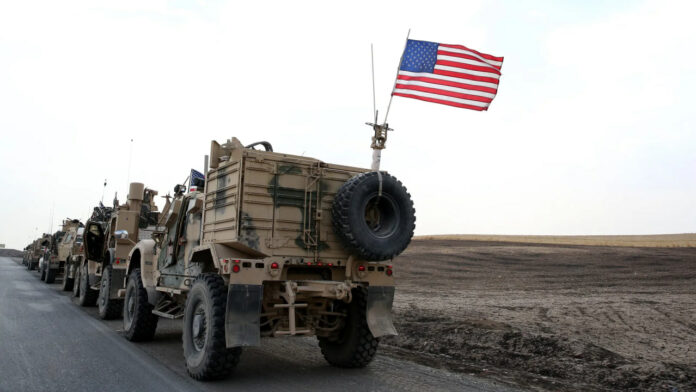Ali Bashar Bakr Aguan – Lecturer at the Faculty of Political Science / University of Mosul
In light of the return of the conflict on the Syrian geography to the regional and international front, and with the escalation of Russian-Iranian movements in the theater of operations, the United States of America strengthened its military presence at the level of direct combat and training forces in Syria, specifically in the areas east of the Euphrates, especially in the oil areas and some border strip sections with Iraq, these reinforcements come within a new deployment strategy drawn up by the US administration in the Middle East in the recent national security document issued during the term of President Joe Biden. Perhaps standing on the most important reasons and explanations of these reinforcements constitutes a state of ambiguity and research challenge because of the lack of clear coordination with the Iraqi official authorities on what is happening at the border, which led to the lack of interpretation of these movements, especially in Iraq with their correct strategic context. In this paper, we try to dispel some of this uncertainty according to the following axes:
First: Geopolitical motives for US moves in Syria and Iraq
Restoring strategic balance: American and even non-American strategic estimates indicate that the United States of America has lost many spaces of movement and strategic influence in the Middle East region in favor of other powers such as China and Russia at the international level, Turkey and Iran at the regional level. On this basis, the American administration aspires to restore its military and strategic presence in Syria through the formation of a map of new multi-much allies in which it does not depend on the Syrian Democratic Forces only on the ground. This new strategy starts from many pillars, the most important of which is that it is necessary not to leave the Middle East wide open in this way for the Russians, the Russians, and even the Chinese, so the states feel The United States of America is growing new risks from this region, so it has decided to reshape its military and strategic presence in this way.
Controlling part of the Iraqi-Syrian border segment to reduce part of the Iranian role: We have to distinguish between tactical sizing operations and operations to cut strategic supplies, as the US administration, through these movements, aspires to control part of the border section between Iraq and Syria through its new allies of the Arab tribes, in the sense that it seeks to develop a phased tactical behavior to organize part of the border and not to cut off the comprehensive strategic Iranian ones that cross these borders towards Damascus, Beirut and the Mediterranean, where realistically, the US administration cannot cut these strategic supplies completely despite its heavy presence on the Syrian side at the level of land deployment. Also, the US military does not exist along the Syrian and Iraqi border strip, as the complete cutting of strategic supplies will lead to a fierce confrontation between Iran and its allies in Iraq and Syria with US forces and its allied tribes, which will lead to military severe frictions.










